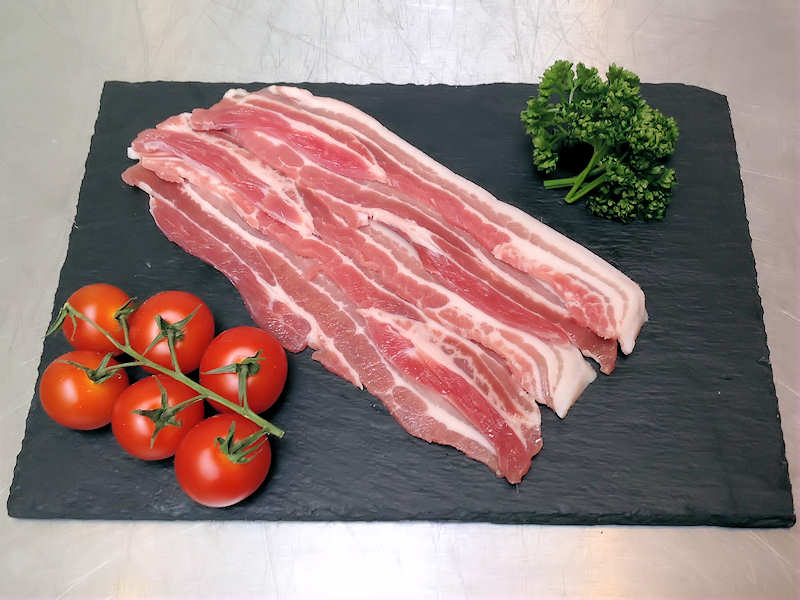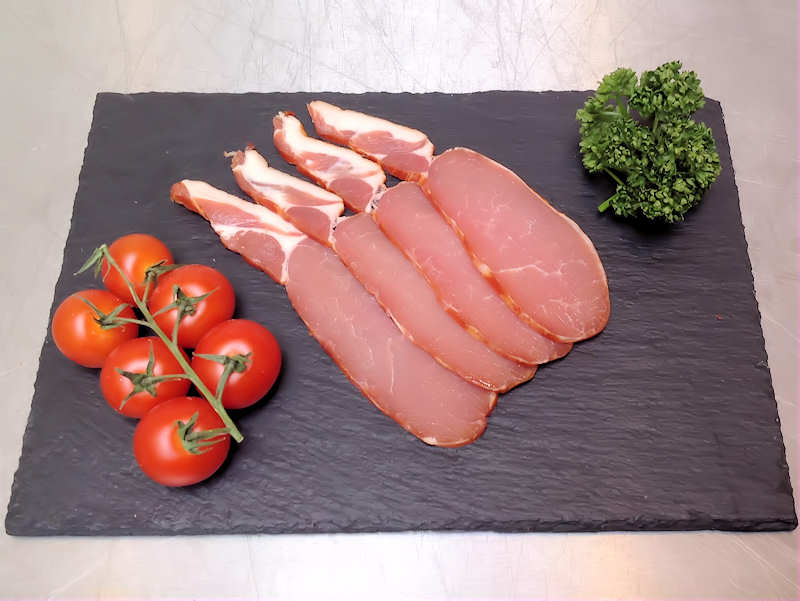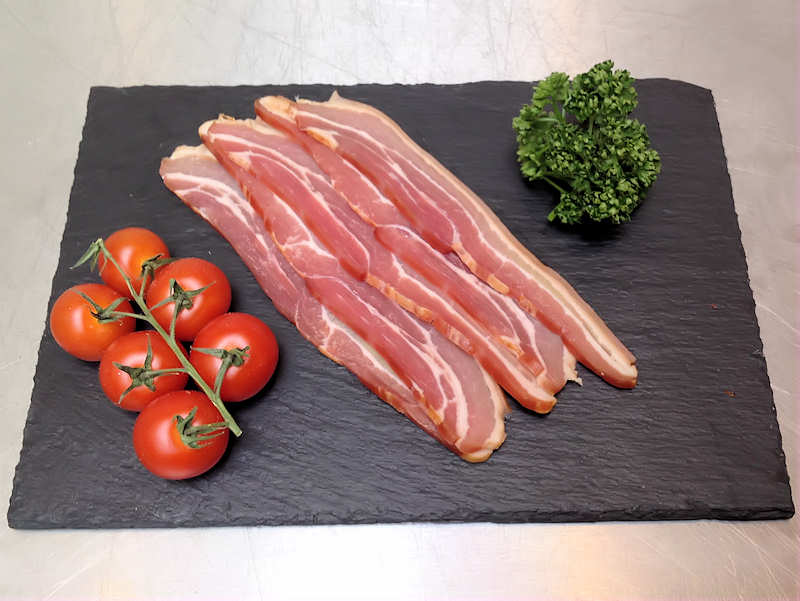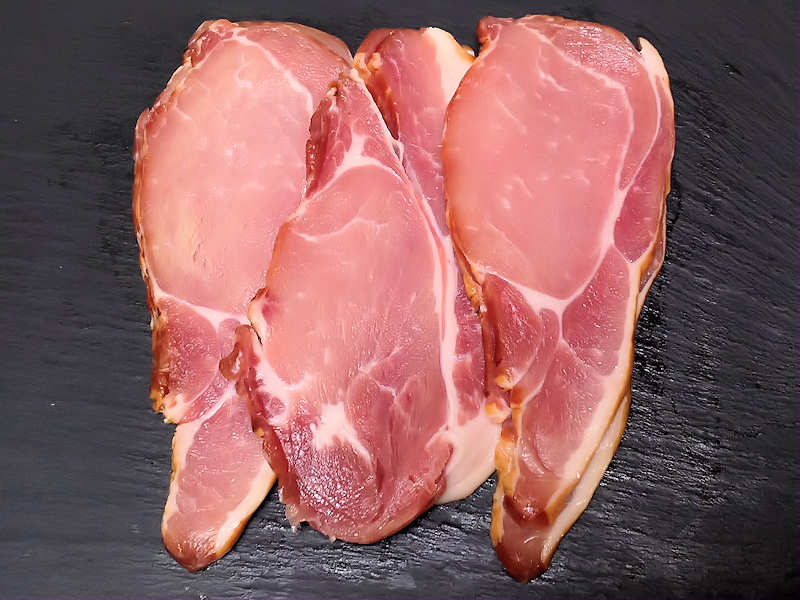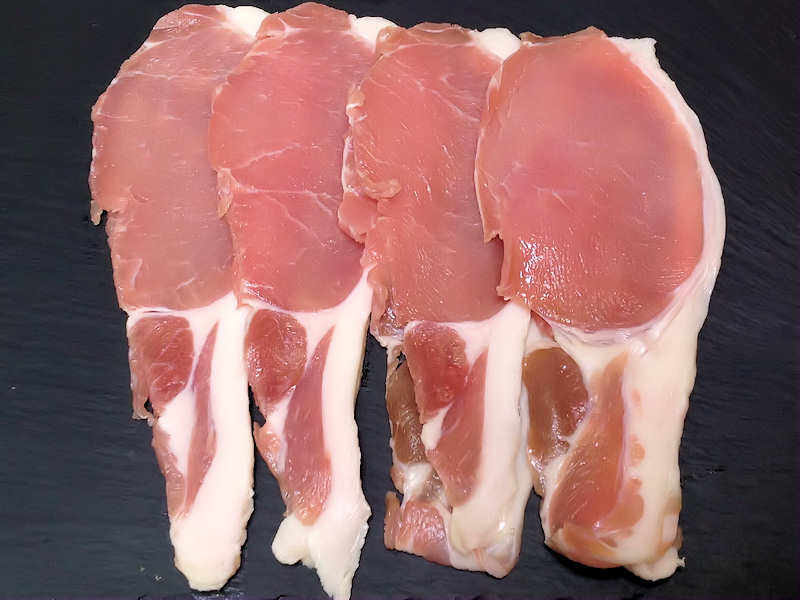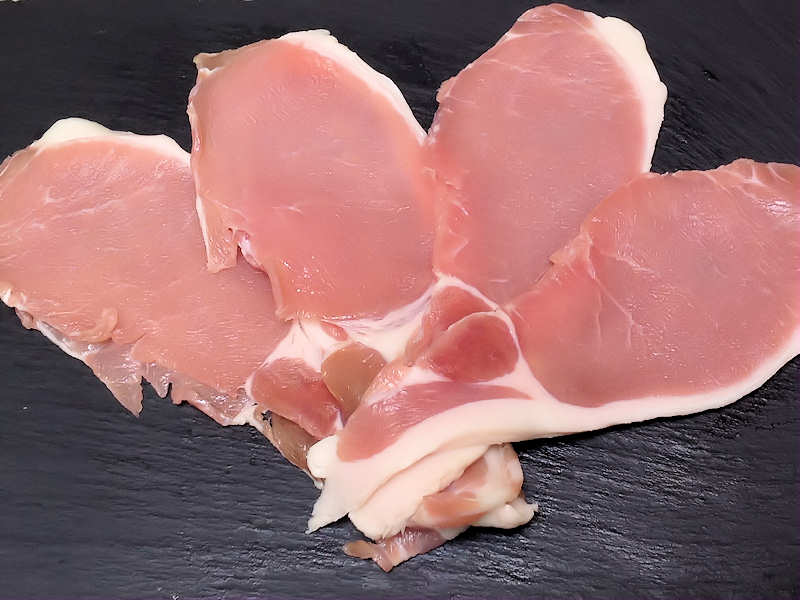Bacon introduction.
Bacon is a meat product prepared from a pig and usually cured. It is first cured using large quantities of salt, either in a brine or in a dry packing, the result is fresh bacon (also known as green bacon). Fresh bacon may then be further dried for weeks or months in cold air, or it may be boiled or smoked. Fresh and dried bacon is typically cooked before eating. Boiled bacon is ready to eat, as is some smoked bacon, but may be cooked further before eating.
Bacon is prepared from several different cuts of meat. It is usually made from side and back cuts of pork, the side cut has more meat and less fat than the belly. Bacon may be prepared from either of two distinct back cuts: fatback, which is almost pure fat, and pork loin, which is very lean. Bacon-cured pork loin is known as back bacon.
Bacon may be eaten smoked, boiled, fried, baked, or grilled, or used as a minor ingredient to flavour dishes. Bacon is also used for barding and larding roasts, especially game, including venison and pheasant.
In continental Europe, part of the pig is not usually smoked like bacon is in the United States; it is used primarily in cubes (lardons) as a cooking ingredient, valued both as a source of fat and for its flavour. In Italy, this is called pancetta and is usually cooked in small cubes or served uncooked and thinly sliced as part of an antipasto.
Meat from other animals, such as beef, lamb, chicken, goat, or turkey, may also be cut, cured, or otherwise prepared to resemble bacon, and may even be referred to as "bacon".
Bacon is distinguished from salt pork and ham by differences in the brine (or dry packing). Bacon brine has added curing ingredients, most notably sodium nitrite, and occasionally potassium nitrate (saltpeter); sodium ascorbate or erythorbate are added to accelerate curing and stabilise colour. Flavourings such as brown sugar or maple are used for some products. Sodium polyphosphates, such as sodium triphosphate, may be added to make the produce easier to slice and to reduce spattering when the bacon is pan-fried. Today, a brine for ham, but not bacon, includes a large amount of sugar. Historically, "ham" and "bacon" referred to different cuts of meat that were brined or packed identically, often together in the same barrel.
Curing and smoking bacon.
Smoke cured bacon, then cooked with additional hickory smoke
Bacon is cured through either a process of injecting with or soaking in brine or using plain salt (dry curing).
Bacon history.
In America, bacon is usually cured and smoked, and different flavours can be achieved by using various types of wood, or rarely corn cobs; peat is sometimes used in the United Kingdom. This process can take up to eighteen hours, depending on the intensity of the flavour desired. The Virginia Housewife (1824), thought to be one of the earliest American cookbooks, gives no indication that bacon is ever not smoked, though it gives no advice on flavouring, noting only that care should be taken lest the fire get too hot. In early American history, the preparation and smoking of bacon (like the making of sausage) seems to have been a gender-neutral process, one of the few food-preparation processes not divided by gender.
In the United Kingdom and Ireland, smoked and unsmoked varieties are equally common, unsmoked being referred to as green bacon. The term streaky bacon refers to belly bacon, due to the prominence of the bands of fat.








